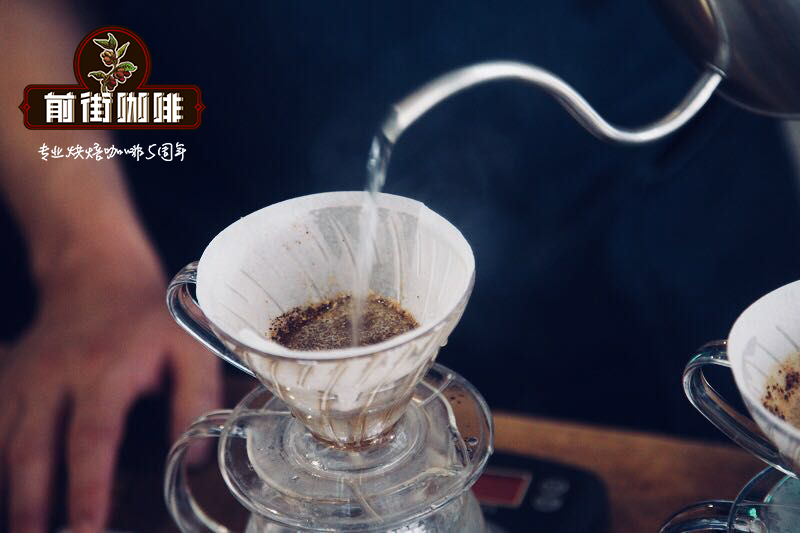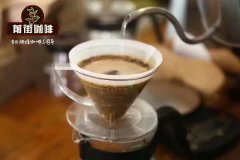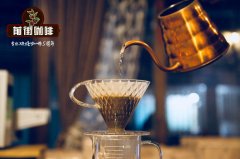What is the effect of the size of the hand current on the coffee? the water injection technique of hand coffee

Professional coffee knowledge exchange more coffee bean information please follow the coffee workshop (Wechat official account cafe_style)
Since instant coffee powder does not need to be separated from dregs, it all depends on the number of teaspoons of coffee powder. By contrast, the public will find the hand-brewed coffee to be filtered complicated and complicated. In fact, for each packet of coffee beans, you only need to find the right size once, and then cook it, which can be as simple as watering flowers.
15 grams of coffee powder with 240 milliliters of water
The most common method is to extract 15 grams of coffee powder in a ratio of about 240 milliliters of water. First of all, inject 30 to 40 milliliters of water in the middle of the funnel. After 20 to 30 seconds of "steaming" (I still don't understand why this action is called steaming), divide it into three to four sections, each with 60 to 80 milliliters, and inject the rest of the water. The whole process will be completed in two to three minutes. In the meantime, avoid wetting the filter paper without coffee powder, otherwise water will be lost from the channel formed by the periphery of pressed powder.
Another kind of more difficult to use, is in the limited time (usually in two minutes) keep making a circle to inject water, until the end of the 300ml "continuous water method". Beginners often "live and live" and inject water too slowly, or they are afraid that the current will be interrupted and it will be finished too soon. All kinds of hand-punching pots, that is, the thick young (flow control) for the water column, came into being.
It is easier to make coffee than to practice martial arts, and the so-called formula is only one sentence: "taste it, but don't overdo it."
"smell it, but don't overdo it."
What sounds easy and natural, there are thousands of ways to do it. The gesture of pouring water and making a circle can be divided into counterclockwise, large and small circles, making a cross, drawing an M, and so on. In fact, whether it is a picture symbol or a "gluttonous snake", you can inject water into a coffee pressed powder in the hope of washing out the taste of each powder. Metaphorically, the coffee powder in the funnel is like a tea bag in a bathtub. We pour water with a hose in the hope that each tea bag will taste evenly together. To do this, you must first wet all the tea bags at the same time. This is the goal of the first water injection (or "stuffy steam" at all).
However, if you look at the funnel with a microscope, you will find that the size of the coffee powder is different. It is equivalent to the tea bags in the bathtub, some as big as roses, and some as thin as dumplings. Even if the extraction starts at the same starting line, by the time the big one tastes enough, the thin one has gone too far (excessive extraction). In order to avoid this phenomenon, apart from high-quality bean grinders, we can only use water to pull larger coffee grains to taste as soon as possible before the fine powder is over-extracted. So when the second water injection begins, the impact is very important.
But what happens if you rush too hard? Apart from running out of water too quickly, resulting in insufficient extraction time, some of the water will flow away with the cracks in the pressed powder or the edge of the funnel, both of which will lead to the weak taste of the coffee and the imbalance between sour and bitter.
Important Notice :
前街咖啡 FrontStreet Coffee has moved to new addredd:
FrontStreet Coffee Address: 315,Donghua East Road,GuangZhou
Tel:020 38364473
- Prev

Six factors to improve the quality of hand-brewed coffee what is Starbucks hand-brewed coffee?
Professional coffee knowledge exchange more coffee bean information please follow the coffee workshop (Wechat official account cafe_style) in the face of coffee, do not self-denial, do not be blindly confident, believe that if you grasp the following six dimensions, even at home, you can also complete a professional coffee brewing like a master. 1. Keeping fresh is the life of coffee, as is the case with raw beans.
- Next

Understanding the steps of hand-brewing Coffee improving the quality of hand-brewing in three stages
Professional coffee knowledge exchange more coffee bean information please follow the coffee workshop (Wechat official account cafe_style) about trickle coffee, mastering the ability to control coffee extraction is one of the best and trickiest things. Among them, there are many variable factors that need to be considered: the grinding thickness of coffee powder, the ratio of water to powder, water temperature and so on. But as long as you operate it correctly, you can also
Related
- What is the meaning of lactic acid fermentation with coffee bean treatment?
- How to judge the state of foam by sound?
- How does the latte pull out the unicorn pattern? Come to get for a little trick to improve the flower pull!
- Will flower pulling affect the taste of the latte?
- Do you know the history of coffee?
- The difference between honey treatment and sun washing what is raisin honey treatment?
- What kind of milk can a novice use to make coffee foam to keep the foam longer? The correct method and skills of milking tutorial sharing
- Why do washed coffee beans taste sour? Flavor characteristics of washed Coffee
- Introduction to the skill of how to practice the size and height of water injection around the circle of hand-brewed coffee
- How do beginners practice coffee flower drawing from scratch?

